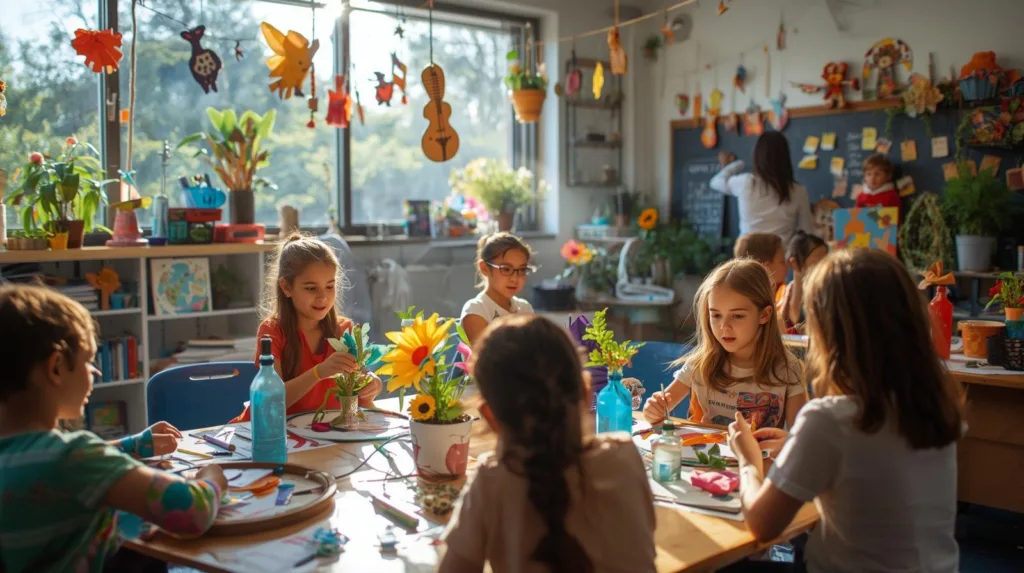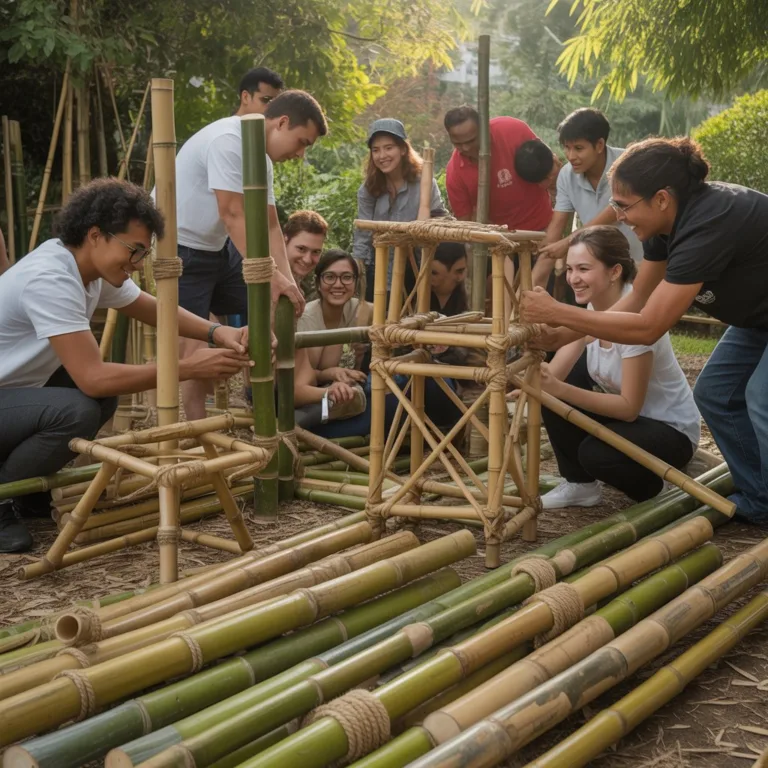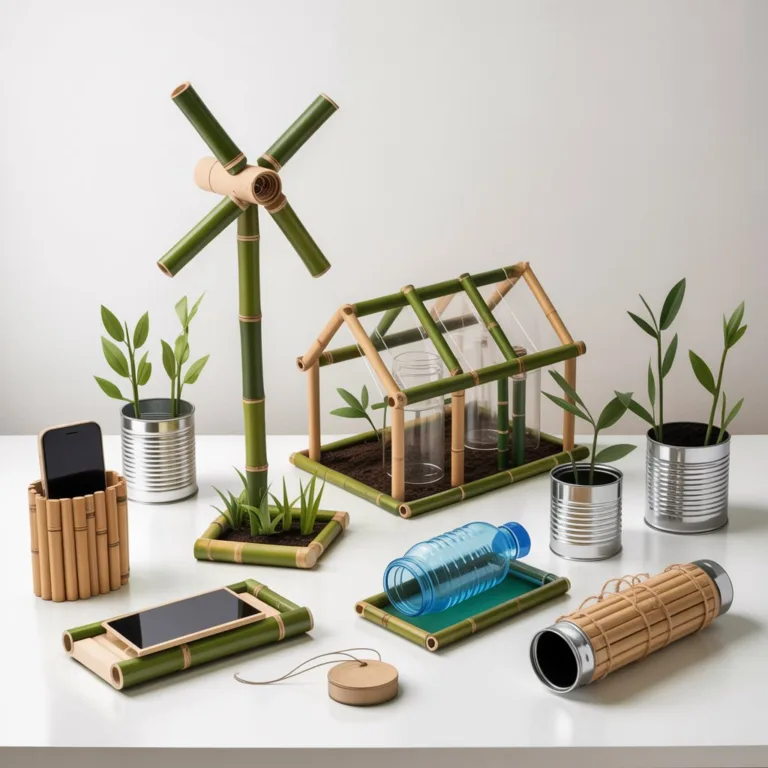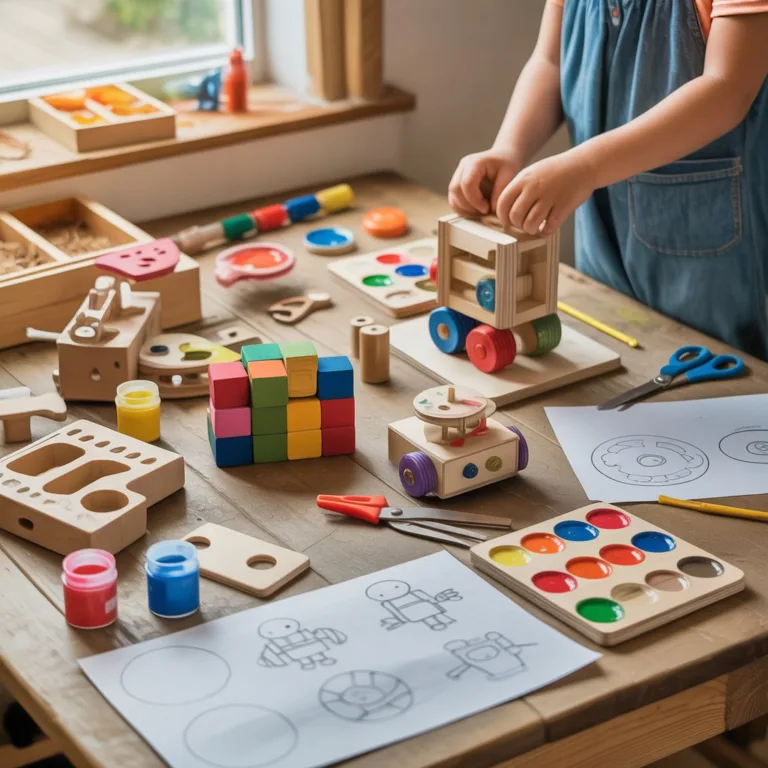Eco art brings together creativity and sustainability, giving students a new way to learn about the world while expressing themselves. When teachers integrate eco-friendly crafts and music-making into their classrooms, they offer a multidimensional learning experience — one that blends sound, rhythm, design, and environmental awareness. Combining music and craft can transform ordinary lessons into interactive, sensory-rich activities that spark imagination and inspire mindfulness about the planet.

The Connection Between Art, Music, and Sustainability
Art and music have always been powerful forms of expression, but when they merge with eco-friendly principles, they become tools for teaching environmental consciousness. Through creative recycling and natural material use, children can build instruments, design artwork, and even compose simple songs using the sounds of nature or handmade tools.
This combination promotes:
- Environmental awareness: Students learn to appreciate resources and reduce waste.
- Sensory learning: Activities engage touch, sound, and sight for deeper understanding.
- Collaboration: Music and crafts naturally encourage teamwork.
- Creativity: Turning discarded materials into something beautiful or functional nurtures innovation.
Incorporating eco art into music education helps students see sustainability not as a limitation, but as a source of inspiration.
Benefits of Combining Music and Craft in the Classroom
When music meets crafting, learning becomes hands-on, joyful, and purposeful. Teachers can design projects that explore rhythm, design, and ecology all at once.
1. Encourages eco-friendly habits
Children begin to understand the impact of waste and learn to repurpose materials like paper, bottles, or bamboo. These practices plant the seeds for sustainable thinking early on.
2. Builds teamwork and communication skills
Group projects like building a class orchestra of recycled instruments require collaboration, patience, and problem-solving.
3. Strengthens motor and cognitive development
Cutting, gluing, painting, and assembling instruments engage fine motor skills. Listening, rhythm practice, and musical coordination enhance cognitive growth.
4. Supports emotional expression and confidence
Playing an instrument that one has built boosts self-esteem. It shows children that creativity and resourcefulness can lead to real accomplishments.
5. Encourages cross-curricular learning
Eco art blends science (understanding sound and materials), language (song lyrics and storytelling), and math (measuring and assembling parts). It’s a natural way to integrate multiple disciplines into one cohesive activity.
Choosing Sustainable Materials for Classroom Projects
One of the best aspects of eco art is its accessibility. Most materials are inexpensive or can be repurposed from everyday classroom waste.
Some of the best materials include:
- Cardboard and paper rolls for percussion or wind instruments.
- Plastic bottles and metal cans for shakers and drums.
- Bamboo and sticks for flutes, xylophones, and rhythm instruments.
- Rubber bands and strings for string-based creations.
- Fabric scraps for decoration and texture.
- Seeds, shells, or pebbles for natural sound elements.
Encourage students to bring materials from home — like bottle caps, small boxes, or containers — and transform them into works of art that make sound.
How to Introduce Eco Art and Music Projects
The key to successful eco art lessons is structure and purpose. Begin with a simple idea that’s easy to understand and build upon it with creativity and curiosity.
- Start with storytelling: Share how music is made in different cultures using natural or handmade instruments.
- Explore sounds: Let students experiment with materials to see what noises they produce.
- Design and build: Encourage groups to create their own unique instruments or sound sculptures.
- Perform together: Host a “green concert” where all instruments are sustainable.
- Reflect on learning: Discuss what students discovered about materials, sound, and environmental responsibility.
Creating Instruments from Recycled Materials
One of the most engaging ways to merge eco art and music is by crafting instruments from recycled materials. Here are some project ideas that are safe, fun, and educational.
Paper Roll Flutes
Empty paper rolls can become flutes or panpipes by cutting holes and decorating them. Students learn about airflow and pitch control while experimenting with sound.
Plastic Bottle Drums
Large bottles can be transformed into drums by stretching biodegradable balloons or fabric across the opening. Decorate with natural dyes or plant-based paint.
Bamboo Rattles
Short pieces of bamboo filled with small seeds or pebbles create gentle percussion instruments. Kids can compare different fillers to explore variations in sound.
Can Shakers
Old cans can become rhythm makers by filling them with beans or rice and sealing the top with paper or cloth. Wrap them with colorful paper or drawings to make them visually unique.
String Instruments with Boxes
Using cardboard boxes and elastic bands, children can explore vibration and pitch. Adjusting the band’s tension teaches them about sound waves and tone differences.
Each project connects the creative process to scientific principles, helping students see the relationship between energy, motion, and sound.
Integrating Eco Music into the Curriculum
Eco music can support various classroom subjects beyond art and music. Teachers can adapt activities for multiple learning goals.
Science: Discuss how sound travels, why materials vibrate, and how natural acoustics work.
Math: Use rhythm patterns to teach fractions and timing.
Geography: Explore traditional instruments from cultures that use natural materials.
Language arts: Write eco-themed songs or poems.
Environmental studies: Teach the importance of recycling and sustainability through creative action.
When students make their own instruments, they become active participants in the learning process rather than passive observers.
Encouraging Creativity Through Improvisation
Once the instruments are ready, let children experiment freely. Improvisation builds creativity and confidence. They can form small groups to create rhythms, simple songs, or soundscapes inspired by nature — like rain, forest sounds, or waves.
You can also introduce simple challenges:
- Create a rhythm that sounds like footsteps in the forest.
- Design a melody inspired by birdsong.
- Use only instruments made from cardboard and metal.
Activities like these encourage imagination while reinforcing the connection between music, environment, and artistic freedom.
Building a Classroom “Eco Orchestra”
An exciting way to combine all projects is by forming an eco orchestra — a musical group where every instrument is handmade from recycled or natural materials. Assign roles for percussion, rhythm, melody, and vocals, and rehearse simple compositions together.
You can incorporate lessons on teamwork, timing, and listening. The end result can be a performance that celebrates both creativity and environmental care. Invite parents or other classes to attend the performance to promote sustainability awareness across the school.
Adding Visual Art to the Experience
Eco art doesn’t stop at making instruments. Students can design stage decorations, costumes, or posters using recycled paper and plant-based paints. Creating a full eco-art atmosphere makes the project immersive and visually inspiring.
Ideas include:
- Using leaves and natural textures for backdrops.
- Painting eco-themed banners about protecting nature.
- Crafting flower crowns, bracelets, or masks from reused materials.
When visual art and sound design meet, the classroom becomes a mini art festival — filled with color, rhythm, and purpose.
The Role of Teachers in Eco Art Projects
Teachers play a vital role in guiding the process, ensuring safety, and promoting reflection. Rather than dictating every detail, the goal is to facilitate discovery. Provide guidance on tool use, discuss sustainability principles, and encourage critical thinking.
Some key tips for teachers:
- Emphasize safety when cutting or handling materials.
- Offer diverse materials so every student can explore freely.
- Foster respect for everyone’s creative ideas.
- Integrate moments of discussion about how materials affect the environment.
By balancing structure with freedom, teachers help students grow artistically and ethically.
Adapting for Different Age Groups
Eco art with music can be adapted for children of all ages.
For preschoolers:
Focus on simple rhythm activities and painting or decorating instruments. Use soft, safe materials like cardboard and paper.
For elementary students:
Introduce concepts like sound waves and eco-friendly materials. Let them explore sound variations.
For middle school students:
Encourage more complex instrument designs and group performances. Discuss sustainability topics such as recycling systems and global waste.
For teens:
Combine eco art with digital recording tools to create soundscapes or eco-themed songs. Challenge them to lead workshops for younger students.
Adapting the difficulty ensures that everyone can participate meaningfully at their skill level.
Sustainability Lessons Through Sound
Eco art with music naturally leads to discussions about sustainability. Each project can end with questions like:
- What materials did we reuse, and how did that help the environment?
- How much waste could we reduce by reusing these items?
- How can we continue creating sustainably outside the classroom?
These reflections help children internalize the values behind the activity. They learn that art can be both fun and purposeful.
Extending Eco Art Beyond the Classroom
The spirit of eco art doesn’t have to stay in school. Encourage students to share their creations at home, organize community performances, or teach family members how to build instruments. Local events like Earth Day or school fairs are perfect opportunities to showcase eco orchestras or recycled art exhibitions.
This community engagement deepens environmental awareness and shows how creative education can inspire real-world change.
Celebrating the Harmony of Creativity and Nature
Eco art in classrooms offers more than entertainment — it builds bridges between creativity, sustainability, and education. When music and craft unite, they show that art can be a force for good, nurturing both imagination and ecological responsibility. Every beat of a handmade drum or note from a bamboo flute becomes a reminder that beauty doesn’t have to harm the Earth.
By encouraging children to make music with what the planet gives freely, we teach them harmony in its truest form — a balance between creativity and care for nature.

Elena Mora is a creative educator and eco-craft enthusiast who specializes in bamboo musical instruments and sustainable toys for children. She believes that hands-on learning through play teaches kids about creativity, music, and environmental responsibility.



